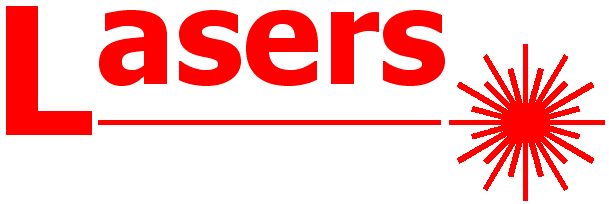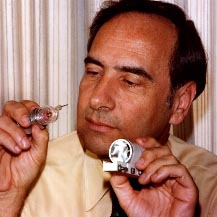
|

|

|
| Home | How Lasers Work | History of Lasers | Basic Information | Bibliography & Links |
 Dr. Maiman and his first laser Image source: http://www.laserinventor.com/ |
Just six years after the first demonstration of stimulated emission, Dr. Theodore Maiman of Hughes Research successfully built a working ruby laser. Despite only taking nine months from inception to completion, Dr. Maiman faced nearly insurmountable obstacles, such as a shoestring budget of $50,000 (which included equipment and the salaries of himself and his assistants), the ridicule of the entire scientific community who believed that ruby was a poor lasing medium, the lack of faith in him by his superiors, and the fact that no one really had any idea what to do with a laser once it was invented. Also, the largest laboratories in the nation including TRG (with a one-million dollar grant from the Pentagon), Bell Labs, IBM, Westinghouse, Siemens, RCA Labs, and GE were racing to be the first to develop the laser.
|
| Despite considerable attention, funding, and competition, Maiman's contributions were not well received by the physics community. In fact the publication Physical Review Letters promptly rejected his paper, and he was forced to publish it, buried, in the UK publication Nature. |

This page was produced by Paul Swanson ( fspas10 {at} uaf.edu ) in November, 2004.